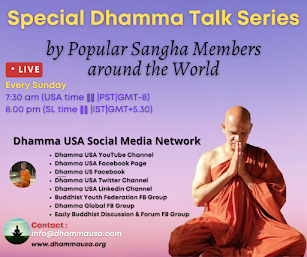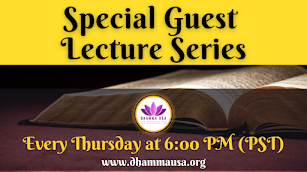Social Relationships in the Buddha’s Time
By Dr. Nivitigala Sumitta (Bhante Sumitta)
During the Buddha’s era in the 6th century BCE, Indian society was deeply entrenched in the Vedic tradition and Brahmanism, which were characterized by a rigid caste system. According to Vedic beliefs, the caste hierarchy was divinely ordained, with Brahmins, considered to be born from Brahma’s mouth, at the top. Brahmins held exclusive privileges as priests, teachers, and advisors, and they regarded themselves as the sole custodians of spiritual knowledge. They maintained their superiority by refusing to engage with or listen to those from lower castes. Below the Brahmins were the Khattiyas, or warriors and governors, who were believed to be born from Brahma’s arms. The Vessās, born from Brahma’s thighs, were engaged in agriculture and trade, while the Sudras, born from Brahma’s feet, were laborers and servants. The outcastes, or Chandalas, were considered the lowest and were ostracized from mainstream society. The caste system was enforced by strict prohibitions and punishments, creating a deeply entrenched social divide.
The Buddha challenged this hierarchical structure, rejecting the caste system and its basis in divine authority. In texts such as the Ambalattha Sutta, Sonadanda Sutta (DN), and the Assalāyana Sutta (MN), the Buddha argues against caste discrimination using biological, sociological, and ethical reasoning. For instance, in the Ambalattha Sutta, the Buddha pointed out that Brahmins, like everyone else, are born from women, thus questioning their claim to divine superiority (DN, p. 413). He also criticized the notion of caste purity and highlighted that true respect and status come from wisdom and virtue, not birth (DN, p. 413).
The Buddha emphasized that in the Buddhist monastic community, all distinctions of caste are abolished. He used the analogy of rivers merging into the sea to illustrate that caste differences dissolve in the monastic order, where everyone is considered equal (AN 1, Nipata Maha Vagga). He famously stated, "None is by birth a Brahmin, None is by birth an outcast. By deed one becomes a Brahmin, By deed one becomes an outcast" (Vasala Sutta). This reflects the Buddhist view that moral actions, rather than birth, determine one’s spiritual status.
Brahmanical traditions, with their focus on rituals and sacrifices, often left individuals in a state of dependence and suffering, relying on divine intervention for purification and better rebirths. The Buddha countered these beliefs by advocating for self-reliance and personal effort. He taught that individuals should be their own refuge: "Atta hi attano nātho, Ko hi nātho parosiya?" (Dhp 145), and encouraged self-improvement and wisdom as paths to liberation. His teachings called for boundless compassion and the pursuit of the Dhamma for the welfare of all beings, urging his disciples to spread his teachings for the benefit and happiness of both gods and humans (AN 1, Nipata Maha Vagga; Dhp 138).































0 comments:
Post a Comment
Your comments and feedback are very helpful to us in improving our posts. We really appreciate your time. Thank you!
Dhamma USA Team.